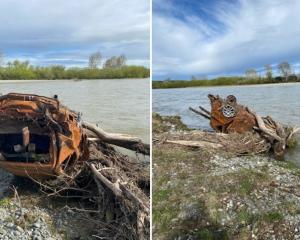
A historic West Coast gold mining site - once the largest in New Zealand and one of the most contaminated - has been effectively shut down by the Department of Conservation due to erosion concerns.
The site at the Snowy River Stamper Battery site at Waiuta, along with others in the area, has long been identified as contaminated from mining work.
Greymouth operations manager Chris Hickford said on Monday the area around the battery site has been partially closed for several years.
“A recent check showed a section of rock riverbank armouring has degraded and there is more erosion around the site. Extending the closure enables us to minimise risk to the public and plan further work at the site."
The Waiuta area which includes the ghost town of the same name includes a number of popular walking tracks to the Doc-administered heritage site.
Mr Hickford said the apart from a track closed by an active slip down from Waiuta township to the old powerhouse next to Snowy River, all other walking tracks at Waiuta are open.
The Snowy River Stamper Battery was operated between 1908 and 1938 using a variety of gold recovery methods.
“The data available suggests the site is unlikely to be causing a significant environmental effect on the Snowy River.”
However, naturally present arsenic became a concentrated byproduct of the gold recovery processes, which also used mercury and cyanide to obtain the precious metal from the crushed ore that came
from the stamper batteries.
The Snowy River site remains still include parts of what was a massive gold extraction plant, including large cyanide tanks and machinery foundations.
Doc has been managing the site as as part of its Contaminated Sites Programme to identify and investigate contamination risks, then develop remediation and management plans to address them.
Another site at Waiuta, the Prohibition site - once the most contaminated site in New Zealand - has already undergone a very costly clean-up overseen by Doc.

The department has 305 potential or fully identified contaminated sites across the West Coast.
Of those - either contaminated or potentially unsafe - 246 are associated with historic mining activity and 27 with landfills.
Waiuta, a Tohu Whenua site, is one of the West Coast’s best known ghost towns.
The once bustling mining settlement produced nearly 750,000 ounces of gold from 1.5 million tons of quartz until its sudden closure in 1951.
- Brendon McMahon
Local democracy reporter
Public interest journalism funded through NZ On Air.











